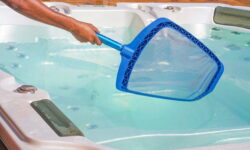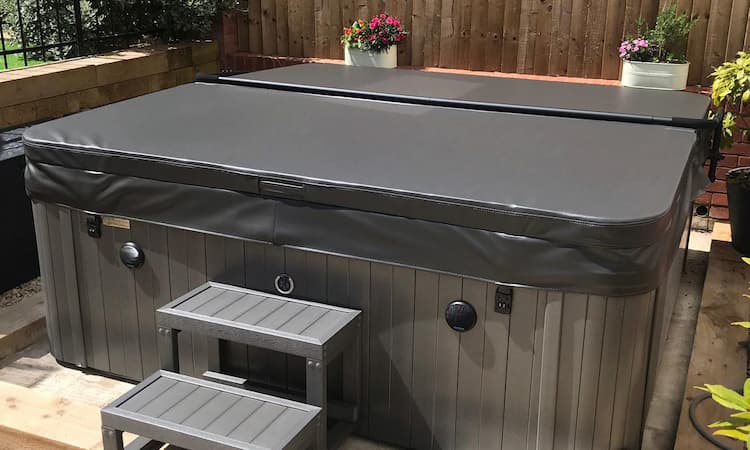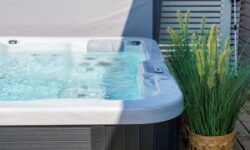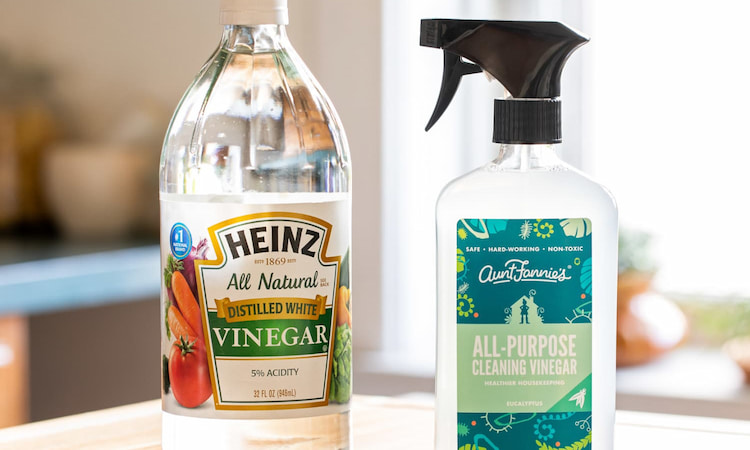You’re tired of harsh chemicals in your hot tub, aren’t you? Well, you’re in luck! This guide is designed just for you.
Maintaining a hot tub without chemicals can be achieved through using alternatives like UV systems, saltwater systems, or enzyme-based cleaners. Regularly cleaning the tub and changing the water also helps maintain cleanliness. It’s also essential to use a cover when the hot tub is not in use to prevent debris and contaminants from entering.
I will teach you how to maintain your hot tub using salt water systems, UV light sterilization, enzyme-based cleaners, and a regular cleaning schedule. You’ll have a spotless, chemical-free hot tub in no time.

Quick Navigation
Understanding the Basics of Hot Tub Maintenance
Before you can effectively maintain your hot tub without chemicals, you’ve got to understand the basic principles of hot tub maintenance.
Start with cleanliness. You’ll need to keep both the water and the hot tub itself clean. This involves regular scrubbing to avoid the build-up of grime and bacteria, particularly in hidden areas like the tub’s jets and filter. Remember, stagnant water breeds bacteria, so keep that water circulating.
Next, you’ll need to manage the water’s pH balance, hardness, and temperature. Aim for a pH level between 7.2 and 7.8. When it comes to water hardness, you’re looking for balance. Too hard, and you risk build-up of scale. Too soft, and you could face corrosion.
1. Salt Water Systems for Hot Tubs
Transitioning into salt water systems for your hot tub, you’re opening up a natural, sustainable way to keep your tub clean and balanced without the use of harsh chemicals.
Saltwater systems operate by converting salt into chlorine through a process known as electrolysis. This natural chlorine is softer on the skin and eyes than traditional chemical versions, providing a more comfortable and enjoyable soak.
The system includes a salt cell and a control box, which you’ll install into your hot tub’s existing plumbing and electrical system. You’ll add salt to your hot tub water, typically around a pound of salt per 100 gallons of water. The control box then sends electricity to the salt cell, causing the salt to break down and form natural chlorine.
Maintaining a saltwater hot tub involves regular testing to ensure the salt levels are correct. You’ll need to adjust the salt levels as necessary to maintain a balanced system.
Additionally, the salt cell will require occasional cleaning to remove any mineral buildup. Despite these small tasks, many find saltwater systems to be a low-maintenance, environmentally friendly alternative to traditional chemical methods.
2. Using Ultraviolet Light Sterilization
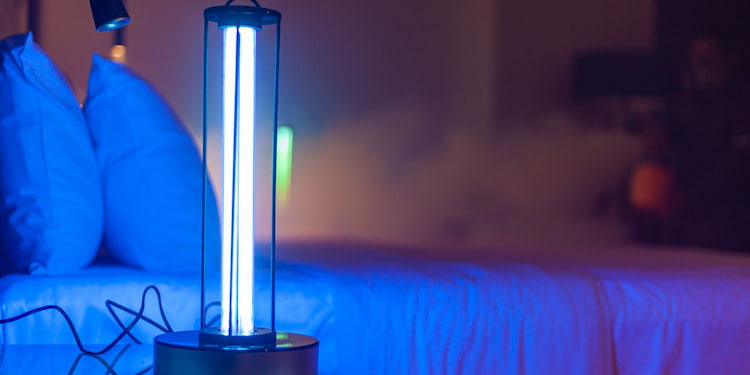
After setting up your salt water system, you can further enhance the cleanliness of your hot tub by harnessing the power of ultraviolet light sterilization.
This effective method kills bacteria, viruses, and other microorganisms by altering their DNA and making them harmless.
UV light sterilization is a chemical-free process. It’s also easy to install and requires minimal maintenance. You just need to replace the UV bulb annually.
Here’s a simple table to help you understand the process:
| Step | Action | Expected Result |
|---|---|---|
| 1 | Install UV light system | Proper installation ensures optimal functioning |
| 2 | Turn on UV light | UV light kills microorganisms in the water |
| 3 | Regularly check bulb | Maintain the efficiency of UV sterilization |
| 4 | Replace bulb annually | Maintain the efficiency of UV sterilization |
3. Enzyme-Based Hot Tub Cleaners
In addition to using UV light sterilization, you can also incorporate enzyme-based cleaners in your hot tub maintenance routine for a chemical-free approach.
These cleaners work by breaking down organic waste into smaller particles, which are then easily filtered out. This way, you’re not just covering up the dirt and grime, but actually removing it.
There are several types of enzyme-based cleaners available on the market. They come in liquid, powder, and tablet form. Regardless of their form, they’re usually easy to use.
You simply add the recommended amount to your hot tub’s water and let the enzymes do their job. They’re highly effective against oils, lotions, and other residues that can accumulate in your tub.
While using enzyme-based cleaners, it’s important to maintain the correct water balance. Too much acidity or alkalinity can hinder the enzymes’ effectiveness. Regularly check your water’s pH level and adjust it as necessary.
Using enzyme-based cleaners also brings an environmental advantage. Unlike traditional chemicals, enzymes are biodegradable and don’t harm the environment.
Plus, they’re gentle on your skin and eyes, making your hot tub experience more enjoyable. Remember, a clean hot tub is a happy hot tub!
4. Regular Hot Tub Cleaning Schedule
Maintaining a regular cleaning schedule for your hot tub is crucial, even when you’re using eco-friendly options like enzyme-based cleaners.
You see, proper hygiene and the longevity of your tub are largely dependent on how frequently you clean it.
Here’s a handy schedule you can follow:
| Week | Task | Details |
|---|---|---|
| Week 1 | Check and Balance Water | Ensure pH is between 7.2 and 7.8, and alkalinity is between 80-120 ppm. |
| Week 2 | Clean Filter | Rinse the filter with warm water. Change it if needed. |
| Week 3 | Check and Balance Water | Repeat the process from Week 1. |
| Week 4 | Drain and Refill | Completely drain the tub, clean the interior surfaces, refill it, and balance the water. |
| Week 5 | Start Over | Repeat the schedule from Week 1. |
Related Read: How Often Should I Change My Hot Tub Filter?
This schedule will help you maintain a clean, healthy hot tub without the use of harsh chemicals.
Remember to keep an eye out for any changes in water clarity or smell, as these can indicate a need for additional cleaning or balancing.
Frequently Asked Questions
You can use alternatives like ozone systems, ion purifiers, or saltwater systems. They’re effective in sanitizing your hot tub. Also, regular filter cleaning and water changes aid in keeping it fresh and clean.
Hot tub water’s temperature significantly impacts its cleanliness. High temperatures promote bacterial growth. Therefore, you must regularly monitor and adjust the water temperature, ensuring it’s not too warm to deter bacteria proliferation.
Yes, you can use essential oils in your hot tub. They’re natural, antibacterial, and antifungal. However, they won’t replace a complete care routine. You’ll still need to regularly clean and monitor your tub’s pH levels. Read more here.
You can test your hot tub’s water quality without chemicals by using a digital tester. It’s easy to use, just dip it in the water and it’ll give you an instant pH and alkalinity reading.
Yes, there are risks. Without chemicals, harmful bacteria can thrive, potentially causing skin and eye infections. It’s also harder to balance pH levels, which can damage your hot tub’s components and your skin.
Conclusion
So, you’ve got the basics of chemical-free hot tub maintenance down pat! From salt water systems to UV sterilization, and enzyme-based cleaners to regular cleaning schedules, you’re now equipped with natural options.
Remember, maintaining your hot tub isn’t just about keeping it clean, but also about ensuring your health and safety. So, dive right in, the water’s fine! Enjoy your hot tub, free from harsh chemicals, and soak in the benefits of your newfound knowledge.

